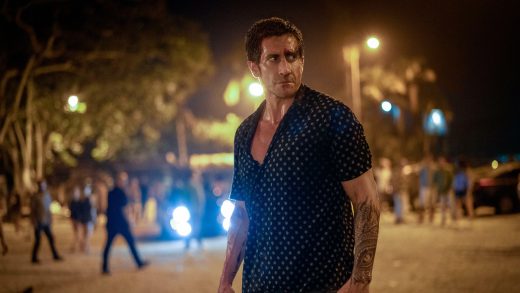To imagine an island is to picture water; the land not defined unto itself, but in relation to what surrounds it. It’s water that renders islands objects of mythic fascination, cut off by reams of blue from mainland and mainstream knowledge. An island feels unknowable because the ocean makes it hard to reach—Ithaca, Atlantis, Te Fiti whose heart Moana tries to restore—and by the time (if ever) we arrive on its shores, we’ve already mapped our imaginaries on to the land.
Nine million years ago, the Eurasian and Philippines sea plates collided, bringing the island of Taiwan into being. Somewhere between six and ten thousand years ago, the first indigenous settlements on Taiwan were established. But for a very long time, the way in which the island was understood had little to do with these rich geological and human histories; instead, it was tied to the mythologies of those who sought to rule, categorize, and control it. Jessica J. Lee writes:
“Today, maps continue to show Taiwan tangled in mystery. The nation occasionally wears a veil of grey; unrecognized by so much of the world…But it is as real a place as any…a living world on a fault-ridden terrain.”
In her new memoir Two Trees Make a Forest: In Search of My Family’s Past Among Taiwan’s Mountains and Coasts, Lee threads together environmental, political and family histories to create a textured account of migration, exile, and place. Beginning with a chance discovery of her grandfather’s unsent letters following his death, Lee embarks on a search for relatives in Taiwan who were long since believed lost over the course of numerous displacements and upheavals. Lee’s journey takes her through Taiwan’s rich ecosystems, its changing colonial rulers, and the various erasures that marked its history:
“I moved from the human timescale of my family’s story through green and unfurling dendrological time, to that which far exceeds the scope of my understanding: the deep and fathomless span of geological time.”
Two Trees Make a Forest is a story of these intersecting movements in time, of the hope and the limits of understanding an island as a real, embodied place.
Richa Kaul Padte: I’d love to start by asking about “the brambled path of memory.” You use this phrase to describe your grandfather’s letters—written after his Alzheimer’s diagnosis and discovered only after he passed away—in which “[t]he past appeared out of context and out of order.” Simultaneously, as you trace your family’s history through places you haven’t lived in yourself, you experience “a longing to remember the things I had not known.” Without in any way diminishing the real and devastating effects of Alzheimer’s on a person’s mind and life, I wonder if there is a sort of parallel between your grandfather’s unsent letters and the memoir you go on to write — a search for a past that feels, for different reasons, out of reach?
Jessica J. Lee: I think that’s right—this notion of the unrememberable or out of reach as undercurrent to the text. One of my biggest fears while writing this book centered on not being “Taiwanese” enough to write it; that I didn’t have claim to my own family’s story. I guess I sort of leaned into that feeling, and the gaps in my family’s story. And then of course, while I was writing it, I was constantly confronted with roadblocks: my grandfather’s records remain classified, journeys into the mountains coincided with storms, I’d find language barriers and other obstacles. All of that, at a certain point, just became a driving force in the story. The idea that answers or clear memories or a perfect scene may not be achievable, but that needn’t hamper the narrative. Those gaps sort of became the story, in a way. I guess this would be very dissatisfying if you are hoping for a clear, happy ending!
RKP: One of my favorite things about Two Trees Make a Forest is how you explore the ways we carry places inside us. You write of your mum, who left China as a child and Taiwan as a young woman, that “in forty years of life in Canada, she had never rooted to the place and got lost easily…[But] in Taiwan, my mother became a person with a topographic history.” This really struck me deeply; I grew up on a mountain in South India with a very specific ecological system, and eight months into the pandemic, I feel an intensely deep longing for it, in a way that I perhaps haven’t before. If, as you write, “[p]lace-memories…work their way into the body,” is there a sort of physical, bodily cost to being unable to reunite with a place?
JJL: I think there is. My mother, for most of my childhood, talked about heat and humidity with a kind of longing I couldn’t quite understand. Then, we began to spend a lot of time in Florida, which though it is not at all like Taiwan culturally, at least had a quality of climate that my mother craved: afternoon rainstorms, heat, sun. It is something so visceral, but hard to qualify or value. I think also of my grandparents who were never able to return to China. The loss involved in this seems, to me, to be so embodied, so impossible to articulate, perhaps in the way muscle memory can be hard to put into words.
RKP: You write “names are rarely uncomplicated markers,” and I’m so interested in how naming works (or doesn’t) as a tool for understanding the natural world. You turn often to scientific classifications as you navigate Taiwan’s mountains, coasts, and forests; names that, as you write, “give me something tangible to keep track of.” But there’s this moment on a long, difficult, humid trail on Shuishe mountain, when, feeling defeated by the unpredictable landscape, you wonder: “What exactly was I hoping to find?… I cannot encircle the forest with learned words and then claim to understand it.” Does the work of truly understanding a place involve letting go of the conceptual framework of language—something we as writers tend to heavily rely on?
JJL: I remain somewhat torn between my impulse to name, to research, to surround myself with language as a way of knowing the world, and the simultaneous need to encounter a place physically, viscerally. I think both are valuable and necessary. But what I really struggled with in writing this book is this thought in the back of my head that I wished the past had been different: that I could know Taiwan as a local, as someone who “belonged” in a conventional sense. This, for me, was a kind of dark thought, because I certainly wouldn’t want my life to have been different than it was! But I admit to having been preoccupied with the inability—whether through language or research or excursions in the land—to make up for what I hadn’t experienced, for what I couldn’t know first-hand.
RKP: That’s one of the things I loved about your book: the way you position firsthand experience against not only research and science, but also against imagination. When you’re hiking up Black Qilai mountain in the pouring rain you reflect: “I am guilty of idealizing the trip, imagining…a sense of intimacy with the mountain. Instead, I feel alienated by it.”
There’s this idea that when we’re “in nature” everything will miraculously fall into place—except this experience usually exists in imagination more than it does in embodied reality. Is the romanticization of nature something you actively set out to resist, or an understanding that emerged from your journey?
I think of my grandparents who were never able to return to China. The loss involved seems so embodied, so impossible to articulate, perhaps in the way muscle memory can be hard to put into words.
JJL: The impulse against romanticization is part of my training: I spent most of my education contextualizing modes of framing non-human nature, particularly as it’s been understood as beautiful, sublime, an escape—especially since the 18th century. So much of how nature writing as a genre thinks about the natural world is still rooted in those ideas, the dichotomies of domestication and wildness, culture and nature. So when I am working, I feel that I’m continually pulled in two directions: by my own intellectual beliefs and that very real, very common impulse to find beauty and pleasure and some ideal form of redemption in the natural world. Of course, in truth, experience always falls somewhere in between, and I find myself encountering all those registers at once, from the critical to the nostalgic.
RKP: You write: “to speak of Taiwanese literature is often to speak of the landscape,” in which “the minutiae of the mountains dwell in words.” But unlike “the sweetened prose [of] British nature writing,” Taiwan’s modern literary works are tied deeply to activism and resistance to colonial rule. This also made me think about how the sweetness of the English countryside has often been set in literature against its hot, untamable colonies—and what growing up in the latter while reading about the former has meant for my own relationship to the land (When I moved to the U.K. as a teenager, for example, it almost felt like I was coming home). If Taiwanese nature writing resists colonial oppression, what, conversely, might British or Japanese environmental literature look like if they were to actually acknowledge their own imperial inheritance?
JJL: This is a great question, and one I have spent years thinking about without a clear answer. I like to imagine that it would be nature writing as written by diasporic voices. I think, in Britain at least, we are beginning to see that quite strongly with writers like Elizabeth-Jane Burnett, Nina Mingya Powles, Zakiya Mckenzie, and Jini Reddy, among many others. A kind of nature writing that doesn’t take belonging for granted, that doesn’t take English as a language for granted, and takes the question of borders to be a core question of what it means to write about land.
RKP: You begin Two Trees Make a Forest with a physical map of Taiwan and you go on to write: “The story of a place—lithic, living, and forgotten—can be found in maps and what they leave out.” As Taiwan changed ruling hands several times throughout its history, mapmaking served as “a tool for colonial governance”; acts of power exercised on and against Indigenous lands and people. Is the map you provide us at the start a frame for your journey (one that I often turned back to while reading the book), or a sort of anti-frame, a reminder of everything that not only the map, but perhaps your memoir too, leaves out?
JJL: I drew the maps for both my books—Turning and Two Trees Make a Forest—with great intention to show as much as they leave out, if that makes sense. In my first book, the map of Berlin is map only of water—nothing of the city is shown on the map. And likewise, with the map in Two Trees, I centered on the vaguest of sketches, marking only the spots I’ve visited: a way of making visible what I had concretely encountered, and leaving the rest quite blank. And of course, the map is just one register through which the place is articulated: I make the same attempt via a timeline and via a slew of names. None of those pictures will be complete, nor should they, but I hope each enriches a kind of multitudinous picture of Taiwan—and the range of possible stories that could be told—for the reader.
The post Searching for Family History in Taiwan’s Forests appeared first on Electric Literature.















